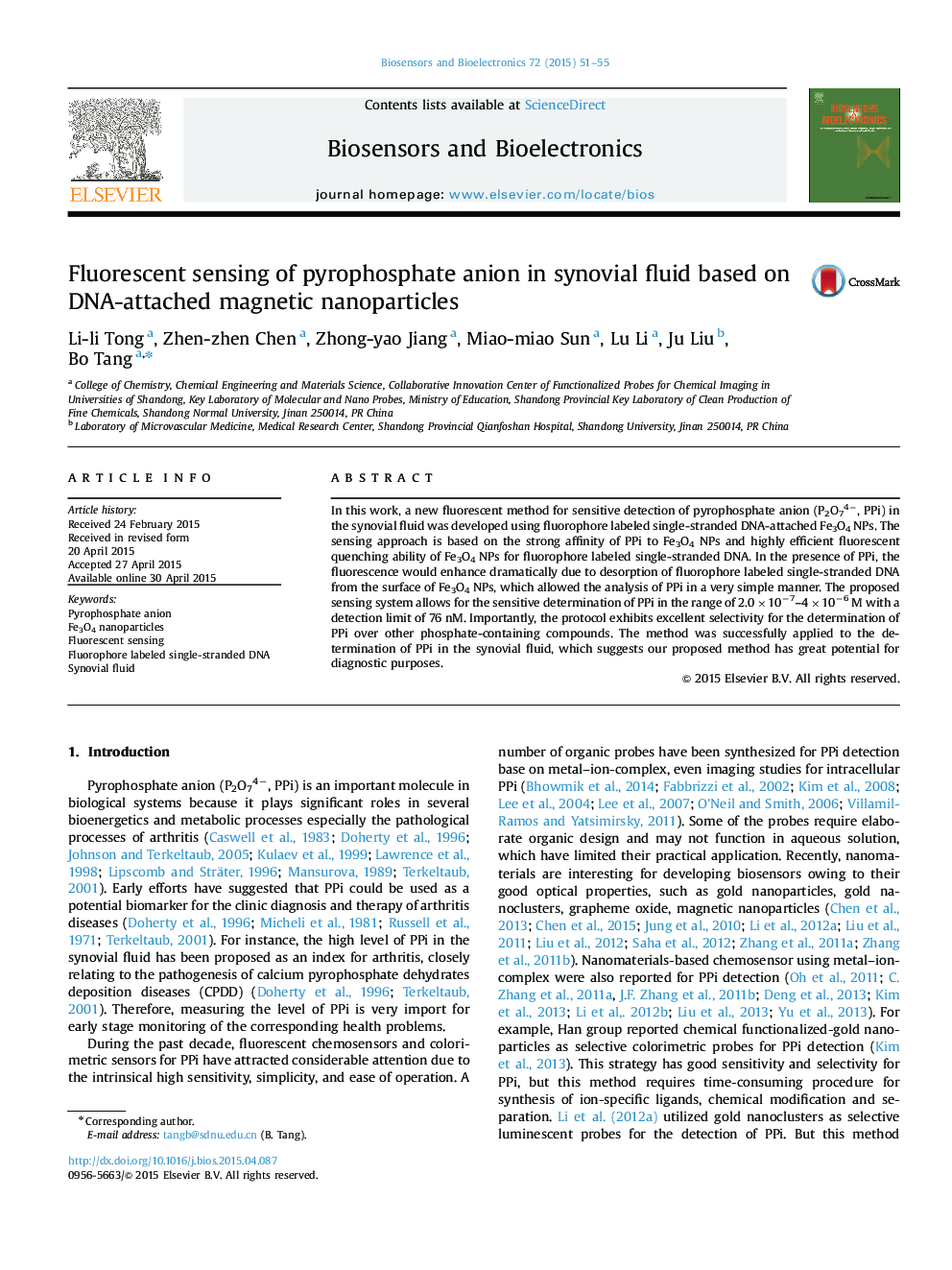| Article ID | Journal | Published Year | Pages | File Type |
|---|---|---|---|---|
| 866295 | Biosensors and Bioelectronics | 2015 | 5 Pages |
•Fe3O4 NPs as an efficient fluorescence quencher for F*-ssDNA was proposed.•A new fluorescent method for sensitive detection of pyrophosphate anion in the synovial fluid was developed.•The sensing relies on the competitive coordination interaction of Fe3O4 NPs between PPi and F*-ssDNA.•The protocol exhibits excellent selectivity for PPi over other phosphate-containing compounds.•The system is simple in design and convenient in operation.
In this work, a new fluorescent method for sensitive detection of pyrophosphate anion (P2O74−, PPi) in the synovial fluid was developed using fluorophore labeled single-stranded DNA-attached Fe3O4 NPs. The sensing approach is based on the strong affinity of PPi to Fe3O4 NPs and highly efficient fluorescent quenching ability of Fe3O4 NPs for fluorophore labeled single-stranded DNA. In the presence of PPi, the fluorescence would enhance dramatically due to desorption of fluorophore labeled single-stranded DNA from the surface of Fe3O4 NPs, which allowed the analysis of PPi in a very simple manner. The proposed sensing system allows for the sensitive determination of PPi in the range of 2.0×10−7–4×10−6 M with a detection limit of 76 nM. Importantly, the protocol exhibits excellent selectivity for the determination of PPi over other phosphate-containing compounds. The method was successfully applied to the determination of PPi in the synovial fluid, which suggests our proposed method has great potential for diagnostic purposes.
